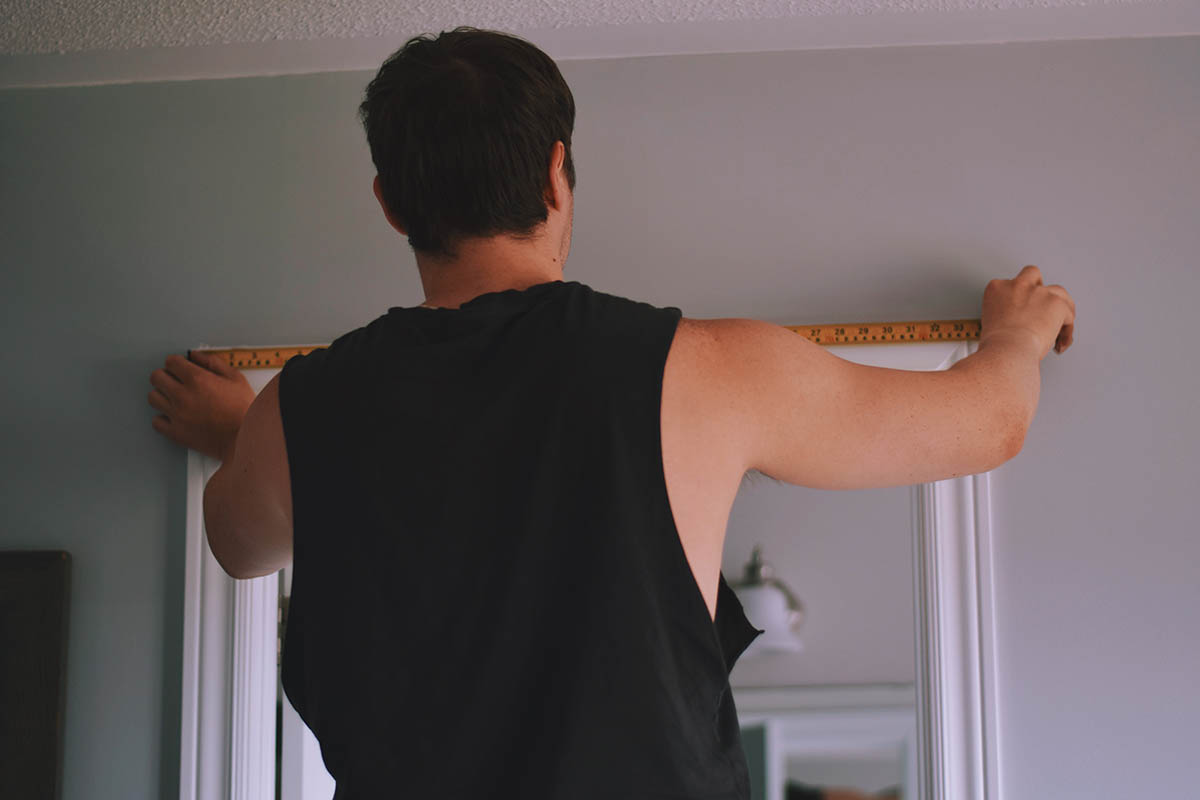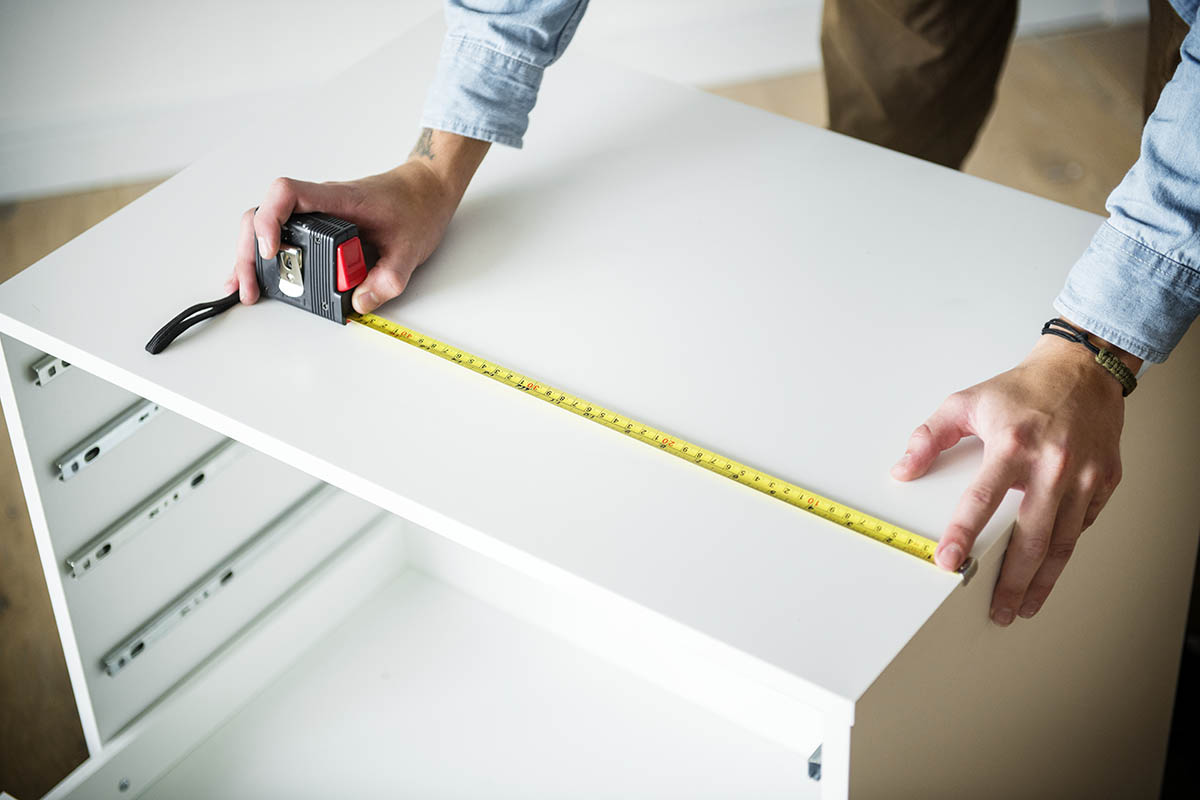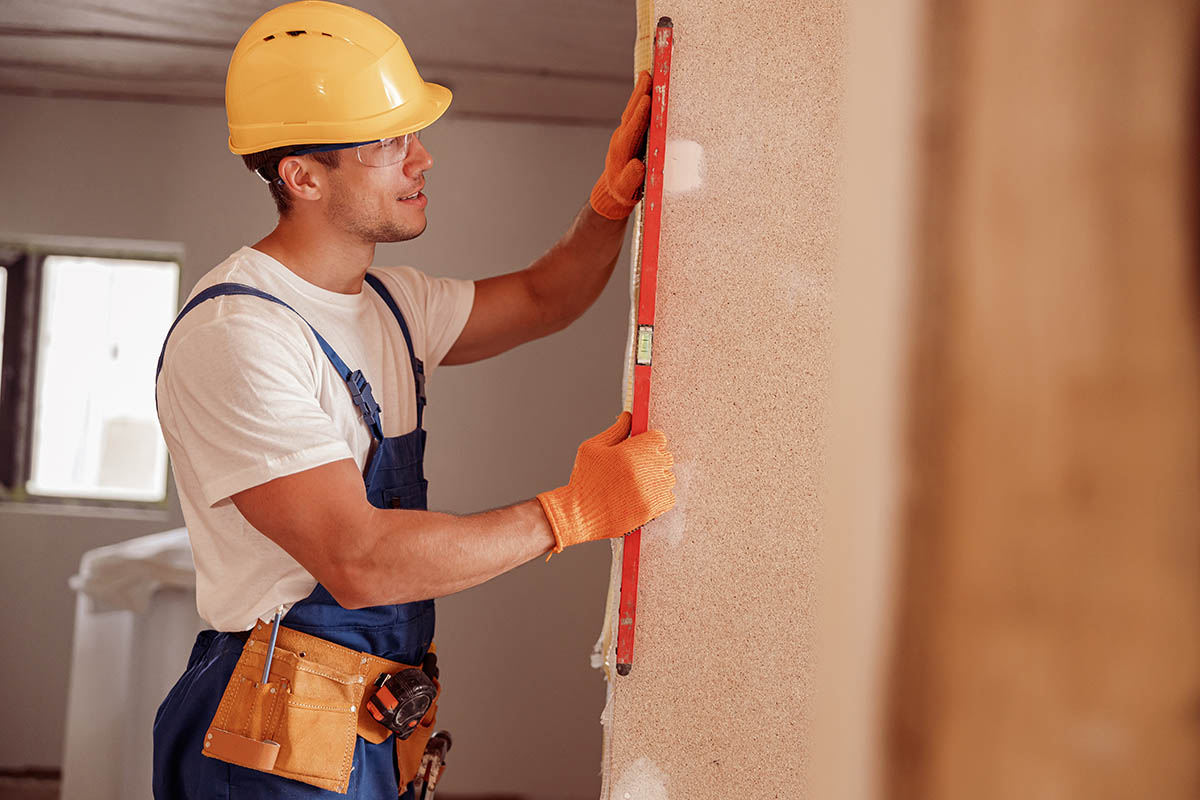
Getting a new kitchen layout often comes down to doing a few simple and affordable alterations to the overall design, one of which is replacing the existing cabinet doors with new ones. This strategy works well if your cabinets are in good shape and able to withstand a few more years of wear and tear.
The easiest way to get the job done is to call in a professional for all the measuring but to save yourself a few pennies, you can tackle the task on your own. The question is: how do you do that? And the answer is available in this post. Continue reading for more details on the different kitchen doors and drawer fronts and how to take measurements.
What Are Standard Kitchen Door Sizes?
The most widespread kitchen door size will measure about 60 cm in width. These tend to be fitted using a single door. Bigger sizes will come with double doors. There are other sizes that can be classified as a standard-sized door and these include 30, 40, 80 and 100 cm in width. Chances are if you go ahead and measure your existing cabinet doors right now, they will perfectly reflect one of these measurements.
A few Points to Bear in Mind Before You Measure Existing Doors:
- Measure all the doors, not the cabinets, since cabinet doors are usually narrower than the kitchen units themselves. And you want to do so at the backside of the door rather than the front. Some doors come with ornaments at the front that may make your measurements incorrect.
- Also, it may be a better idea to disassemble the doors, lay them flat on the floor and do the measuring there.
- You should measure in millimetres, not centimetres. If you don’t know how to convert centimetres to millimetres, don’t worry, we have you covered. It’s a cinch. All you have to do is multiply the number by 10.
- Another thing to take into account is that you need to measure each door individually. Don’t measure one door only and call it a day. The reason you want to go all the way from the base kitchen units to the wall units is that these vary in size, even when they were fabricated by one and the same manufacturer.
- This rule applies especially to the hinge-hole position. Don’t assume they are going to be the same size. If you want the manufacturer to drill hinge holes in the units, you have to provide them with the right measurements.
- Speaking of hinge holes, inspect your existing hinges for faults. If necessary, adjust or replace some hinges. No matter what option you stick with, make it a point to add the measurements of the hinges and hinge holes to the order list.
- Kitchen cabinets come with different thicknesses; 15 or 18 mm thick.
- If you are dealing with two doors for one opening, remember that a left-hand door opens to the left, while a right-hand door opens to the right. This way you can check whether you are faced with a right-handed or left-handed door.
- It may be useful to make a small plan of all your doors so you don’t miss to include all units or panels. It’s unlikely that the cupboards and base units are the same size, so your measurement should cover all the hinges, any opening or hinge side, and just about anything we mention here. If you are unsure you have done all the calculations it takes to get new doors, talk to the manufacturer and they will provide more info on your measuring technique and scope of work.
What Is a Door Overlay?
A vital clarification to make has to do with the term overlay that so many people are confused about. This is a tricky step that you need to get correct if you want to order the right size of cabinet doors. An overlay refers to the edge of the cabinet where the door lays. You may have noticed that most cabinet doors tend to be bigger than the cabinet opening they have to fit over.
The frame of the cabinet that they cover is basically the overlay and it’s different in size from one cabinet door style to the next. Not to mention, it varies from manufacturer to manufacturer. If there is no frame overlap, the doors will kind of fuse into the cabinet openings and look a little all over the place. Everything will look chaotic and unappealing. By contrast, with the overlay in place, all of the doors blend and you get a uniform look.
So, it’s mainly because of the overlay that your unit doors will be slightly bigger than the width of the cabinets themselves. It may be possible to change the overlay but you need to be careful because you may crowd the space. In regard to most cabinet doors, the industry standard for an overlay reads half an inch of clearance around the door but then again, it may be different for your units.
You may be interested in reading how to choose the best kitchen cabinets for more information.
How to Measure New Cabinet Doors

Prior to replacing your units, you always start by measuring the width and then you proceed to get the height measurement of the drawers. As mentioned above, you should work at the back of the door because this is how you get more accurate measurements and also work from left to right. Make sure you have a good tape measure handy and place it across the width of the cabinet, then mark the number. Double check your measurements.
How Do You Measure Drawer Fronts?
When measuring across your drawer fronts, you want to use the same logic as above: width comes first, height comes second. Again, left to right. There are different sizes and styles, from drawer front standard to drawer front plain and drawer front groove.
Now, this job is a little bit more specific since you need to measure from inside edge to inside edge as well so that the replacement drawer can slide in. As you go for the width, place your tape measure over from the left stile to the right stile. For height, you want to start measuring at the inside edges of the bottom rail until you get to the top one.
In many cases, the cabinet opening is slightly smaller than the drawer door itself, which means you have to allocate space for the door overlay that we talked about earlier. Without a thin gap in between, the drawers won’t be able to open and close. To do this calculation, simply add about an inch (2.54 cm = 25.4 mm) to your width and an inch to your height.
For example, this means that if your cabinet opening came out to be 250 mm wide and 500 mm tall, you should send the following measures to the manufacturer that will be providing the new doors:
275.4 mm (in width) x 525.4 mm (in height).
Double-check if that’s the correct math for your cabinet opening. And don’t forget about the hinge holes. Start at the top of the drawer/cabinet door and work your way to the centre of the top hinge hole. Repeat for the bottom hinge hole position by starting at the bottom of the door and getting to the centre of the hinge position. Keep in mind that the standard diameter of a hinge hole runs 35 mm. You don’t need to worry about the width or the height.
And finally, many times homeowners need to replace panels below or above an oven. They are basically drawer fronts. Of course, you can always place an order for a plain panel. This is a decision you need to make before you contact the company, just mind that a panel is not the same as a drawer front and it may ruin the look you are after.
How Do You Measure Double Cabinet Doors?
If you have a single opening, yet you would like to fit two doors in there, we can help you take accurate measurements. The first thing you are going to do is get the width and height of the cabinet opening the same way you did with the single opening cabinet from above (by going in for the inside edges).
The next step is to count in clearance for the overlay and leave space for the gap between the double doors (which will allow you to pull the door open). Add an inch to the height you measured and repeat the same calculations for the width. However, as you get the number, divide it by 2 so you get the size of the two doors. If you are successful, the units will not rub against each other when you attach them to the unit.
Why Use Custom Cabinet Doors
The process of measuring cabinet doors often seems complicated, laborious, and challenging, so you may be tempted to buy average replacement cabinet doors at some store and hope they will fit effortlessly. However, there are a lot of things that can go wrong if you choose to go this road. In the end, you might regret your decision. Sometimes it’s wiser to put in the effort instead of picking an easy path.
Correct Measurement is Everything

There is no need to stress the importance of correct sizing as far as cabinet doors and drawer fronts are concerned. Not only will it ensure the cabinet doors open and close without rubbing but it will provide a consistent, homogenous look throughout the entire row of kitchen cabinets, making it seem as if those are the original doors, panels, and hinges they came with.
Never underestimate these simple steps and take your time with the measuring process. If you submit the wrong specifications on the doors, hinges, inside edge parameters, etc., the manufacturer will not be able to make changes to the cabinet doors once they have been cut down to the preferred sizes. The standard units will be useless and you may not have the budget to start the process all over again. This can be a costly mistake.
Another mistake you can make is to assume your kitchen doors, opening, and hinges are a standard size. Truth is, the previous owners may have made changes to the size of the cabinets so they can fit in the tight space. It may be that some items were altered but others were kept intact.
Besides, if your kitchen is bespoke, it certainly has nothing to do with the industry standard, which means it’s more than crucial to separately measure every cabinet door and drawer front you want to replace.
Last but not least, everyday wear and tear, moisture, and temperature extremes take a toll on the structure and can warp the original cabinet door size and quality. Thus, when you pick your replacement cabinet doors, you have to look at them individually, as each cabinet door may turn out to be different in size. It’s finer details that guarantee your success and you have to adjust to that.
